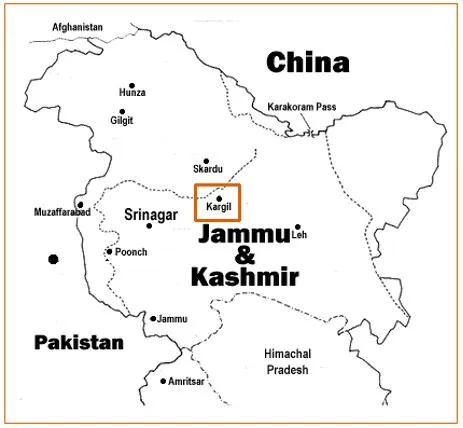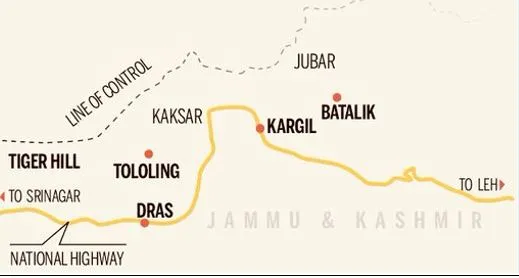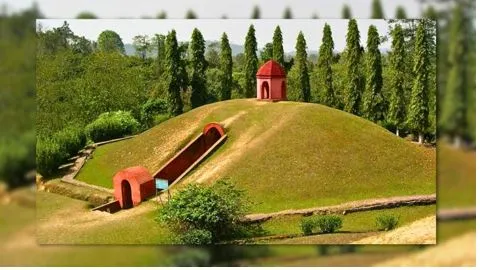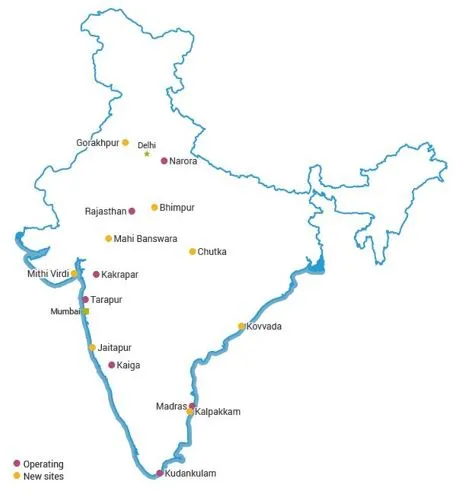

27th July 2024 (11 Topics)
Mains Issues
Context
India and the United States formalized a significant cultural property agreement aimed at enhancing cooperation to protect and preserve each country’s cultural heritage. This agreement marks a major milestone in international cultural heritage protection efforts.
Key Features of the Agreement
- Prevention of Illegal Trade: The agreement aims to prevent the illegal trade of cultural property by implementing stricter regulations and cooperative measures between the U.S. and India.
- Return of Antiquities: It facilitates the repatriation of looted and stolen cultural artifacts to their countries of origin, making the process more efficient and transparent.
- Global Cooperation: India joins 29 other countries that have similar bilateral cultural property agreements with the U.S., strengthening global efforts to protect cultural heritage.
- Implementation Framework: The agreement is based on U.S. law under the 1970 UNESCO Convention, which seeks to prohibit and prevent the illicit import, export, and transfer of ownership of cultural property.
Significance and Implications
- The U.S.-India Cultural Property Agreement represents a significant advancement in cultural heritage preservation. By formalizing this agreement, both nations reaffirm their commitment to tackling the illicit trade of cultural property and fostering a deeper cultural connection. This agreement not only strengthens bilateral ties but also contributes to global efforts in protecting cultural heritage.
- The agreement sets a precedent for international cooperation in the field of cultural property and reflects a broader commitment to safeguarding the world’s cultural legacy for future generations.
PYQSafeguarding the Indian art heritage is the need of the moment. Discuss. [2018] |


Mains Issues
Context
The Supreme Court of India has agreed to review whether Governors, by delaying crucial Bills and eventually referring them to the President, are allowing undue Union interference in State legislative matters, thereby undermining federalism. This decision came in response to a petition by the State of Kerala.
Issue at Hand:
- Kerala's Petition: Kerala's government challenged the Governor’s decision to withhold assent on seven Bills for up to two years before referring them to the President. The Bills addressed State matters such as cooperative societies, Lok Ayukta, and university laws. Kerala argued that the Governor should have either returned the Bills to the State Assembly with reasons for objections or acted on them in a timely manner. Instead, the Bills were delayed, denying the people of Kerala the benefits of these legislations.
- Union Influence: Kerala contended that this delay allowed the Centre to make decisions on issues that were within the State's jurisdiction. The Governor’s actions were seen as undermining the Constitution's balance between State and Union powers.
Impact of Delays:
- Federal Balance: By delaying or withholding assent on Bills, Governors might disrupt the functioning of State legislatures and executive bodies, affecting their ability to implement laws and policies effectively.
- Judicial Intervention: The State governments’ functions are unfairly hindered by delays or arbitrary actions.
Fact Box: Constitutional Provisions
|


Mains Issues
Context
In her Budget 2024 speech, Finance Minister Nirmala Sitharaman announced plans to develop Bharat Small Reactors (BSRs) as part of India's push to expand its nuclear energy capabilities. These reactors represent a significant shift in India's nuclear energy strategy, aiming to make nuclear power more accessible and versatile.
What Are Bharat Small Reactors (BSRs)?
- Definition: BSRs are compact nuclear reactors designed to produce electricity on a smaller scale compared to traditional large nuclear power plants.
- Technology: They will use India’s existing 220-megawatt pressurized Heavy Water Reactor (PHWR) technology, which is already in use in 16 reactors across the country.
- Private Sector Involvement: For the first time, the Indian government will involve private companies in developing and operating these reactors. This is a major change from the previous law, which only allowed government control over nuclear energy.
- Small Modular Reactors (BSMRs): The government is also researching BSMRs, which are a newer type of small reactor. These are being designed at the Bhabha Atomic Research Center in Mumbai.
Why Are BSRs Needed?
- Flexibility: BSRs can be placed in a wider variety of locations, are quicker to build, and may be more affordable compared to large reactors.
- Clean Energy: They are part of India's strategy to use cleaner energy sources. Nuclear power helps in reducing reliance on thermal power (like coal), providing a stable source of electricity as the country moves towards greener energy.
- Utility: BSRs could help power remote areas or large industries like cement and steel plants, aligning with global trends in using smaller, more flexible nuclear reactors.
Fact Box: India’s Nuclear Capacity
|
PYQQ: With growing energy needs should India keep on expanding its nuclear energy programme? Discuss the facts and fears associated with nuclear energy (2018) |


Mains Issues
Context
The world tourism scenario is worrisome. The latest victim is Greece's "Instagram Island" Santorini. Of the record 32.7 million people who visited Greece last year, around 3.4 million, or one in 10, went to the island of just 15,500 residents.
What is Overtourism?
- The primary distinction between regular tourism and overtourism lies in a destination's saturation with tourists. If their number exceeds its capacity to accommodate visitors without negative effects on the local community, it is called overtourism.
- Factors behind such developments include:
- growth of budget airlines
- impact of social media coverage on popularizing destinations
- government policies that put tourism sector growth before sustainability
Impact of Overtourism
- Economy: Flow of tourists (growth of demand for goods and services) drives up the cost of living for locals, causing income inequality, where locals may be unable to afford necessities. As tourism-related businesses dominate regions, they may displace local enterprises.
- Society: Communities strive to adapt to visitors’ preferences, which dilutes local customs and traditions and leads to a loss of authenticity and heritage (cultural erosion).
- Residential areas are converted into tourist accommodations, and residents may find themselves
- It leads to overcrowded public transport, congested roads, and stretched healthcare facilities.
- Environment: Increased waste, air, and noise pollution can degrade natural landscapes and harm local wildlife.
Suggestive Measures:
- Technology: The travel industry can utilize tech-based tools that combat the root causes of tourist congestion and actively encourage travel to lesser-known locales.
- Regulated tourism practice: There is need to establish regulated tourism practices with promotion of sustainable agendas. There is need of maintenance of proper tourist capacity in every tourist place.
- Vigilance and patrolling: Protected areas require vigilance and regular patrolling to reduce unwanted wildlife-tourist interaction as well as habitat destruction due to off-road driving and encroachment.
- Area Specific Sustainable Plan: There is need to review the area’s present status and draw up a sustainable plan that respects the specific requirements of region.
- Promote Ecotourism: There is need to initiate a dialogue on adverse impacts of commercial tourism and promoting ecotourism.
How Regions Are Managing Tourist Numbers?
|


Mains Issues
Context
Since the abrogation of Article 370 in Jammu and Kashmir (J&K) in 2019, which ended the region’s special status, there has been a resurgence of militancy in the Jammu region. This has raised concerns about regional stability and security.
Severity of the Situation
- Increased Militancy: After a period of relative calm, militancy has reemerged in Jammu. In 2020, 18 militants were killed in the region. The following year, militants established a stronghold in the Pir Panjal valley and targeted Army camps and convoys.
- Recent Attacks: In 2023, 12 security personnel, including 11 soldiers, were killed. There were 14 militant attacks in just June and July, almost one every four days.
- Impact on Local Areas: Militancy has spread to Doda, Ramban, and Kishtwar districts. In Saida village, militants attacked local shops and opened fire, causing fear and disruption among residents.
Reasons Behind the Resurgence
- Post-Article 370 Developments: The removal of Article 370 has led to increased militant activity as groups seek to destabilize the region in response to the political changes.
- Strategic Shifts: Militants are using old infiltration routes through Kathua and Samba districts, which were previously inactive. This shift reflects a strategic adaptation by militant groups.
- Challenging Terrain: The difficult mountainous terrain of Jammu, particularly the Pir Panjal and Chenab valleys, provides a strategic advantage to militants, making it hard for security forces to conduct effective operations.
Impact
- Security Forces: The increased militant activity has led to the death of several security personnel and has strained resources. Security forces are facing challenges in patrolling the vast and rugged terrain.
- Local Communities: Villagers are experiencing heightened fear and disruption. Economic conditions and local grievances, such as unemployment and perceived discrimination, are contributing to the challenges.
- Terrorist Tactics: Militants are employing sophisticated tactics, using advanced weaponry and mobile apps for navigation. They are also adapting their appearance to avoid detection, making them harder to differentiate from security forces.
Responses and Measures
- Increased Security Measures: The Army has reinforced its presence with more soldiers and increased patrols. They are also using drones for surveillance. Efforts are being made to detect and neutralize underground tunnels used by militants.
- Political Solutions: The government is being urged to find a political solution to address the underlying issues contributing to militancy.
- Community Outreach: Initiatives are being taken to improve relations with local communities, including mobile schools and medical patrols.
PYQQ: For effective border area management, discuss the steps required to be taken to deny local support to militants and also suggest ways to manage favourable perception among locals. (2020) Q: Analyse internal security threats and transborder crimes along Myanmar, Bangladesh and Pakistan borders including Line of Control (LoC). Also, discuss the role played by various security forces in this regard. (2020) Q: Border management is a complex task due to difficult terrain and hostile relations with some countries. Elucidate the challenges and strategies for effective border management. (2016) |


Prelims Articles
Context
July 26, 2024, marks the 25th anniversary of Kargil Vijay Diwas, a day dedicated to honoring the valor and sacrifices of Indian soldiers during the Kargil War of 1999. This significant day commemorates the successful culmination of Operation Vijay and pays tribute to the nearly 490 Indian soldiers who gave their lives in the conflict.
About the Kargil War
- The Kargil War stemmed from the ongoing tensions between India and Pakistan, which had escalated after the 1971 war that led to the creation of Bangladesh.
- Both countries continued to clash, with disputes over the Siachen Glacier and nuclear tests in 1998 increasing hostilities.
- In February 1999, India and Pakistan signed the Lahore Declaration to resolve tensions and seek peace.
- Despite this, in May 1999, Pakistani soldiers and militants infiltrated Indian territory along the Line of Control (LoC) in Kargil, aiming to sever the link between Kashmir and Ladakh and create unrest.
- Operation Vijay: The infiltration led India to launch Operation Vijay to reclaim the occupied positions. The conflict, lasting from May to July 1999, involved fierce battles in the challenging mountainous terrain of Kargil.
- The Indian Army successfully recaptured key positions, including Tiger Hill, after intense fighting.
- The war concluded on July 26, 1999, with India regaining control of the territory. Nearly 490 Indian soldiers were martyred in the conflict.
- In response to this, the government established the Kargil Review Committee (KRC), which was tasked with recommending measures to avert future crises. One significant recommendation was to reduce the age profile of the Indian armed forces, a notion that had also been proposed by the Arun Singh Committee in 1989.
- The call for a younger military profile gained momentum with subsequent recommendations from the Standing Committee on Defence (2006) and the Shekatkar Committee (2017).
- The Agnipath scheme, introduced to address these expert recommendations, allows young recruits to serve in the Indian Armed Forces for a period of four years. This initiative aims to bring a fresh influx of 'josh and jazba' (enthusiasm and spirit) into the military, while also fostering a shift towards a more technically adept force.


Fact Box: Major military actions and operations undertaken by India after independence
|


Prelims Articles
Context
The Ahom dynasty's burial system, known as 'Moidams,' has been recognized by UNESCO as a World Heritage Site, becoming the 43rd property from India to be included in the prestigious index. This makes it the first cultural site from Northeast India to receive this honor. India is now at the 6th position globally for the most number of World Heritage Properties.
About Moidams:
- Moidams are unique pyramid-like burial mounds used by the Tai-Ahom dynasty that ruled Assam for about 600 years (from 1228 to 1826).
- Moidams are large, pyramid-shaped mounds made of layers of bricks and earth.
- They feature vaulted chambers with arched passages for entry. Each chamber has a raised platform where the body was placed.
- Burials: Objects like royal insignia, wooden, ivory, or iron items, gold pendants, ceramic ware, weapons, and clothing were buried with the deceased. Some Moidams also include human sacrifices from the Luk-kha-khun clan.
- Moidams are similar to ancient Chinese royal tombs and Egyptian pyramids in their use of monumental architecture to honor and preserve royal lineage.

About the Tai-Ahom Clan:
Assam’s World Heritage Site
|


Prelims Articles
Context
The number of startups in India has increased to more than 1.4 lakh.
Key-highlights
- The number of Department for Promotion of Industry and Internal Trade (DPIIT) recognized startups State/UT-wise has shown that Maharashtra tops the list with 25,044 registered startups.
- Karnataka is second with 15,019 registered startups, followed by Delhi with 14,734 startups. Uttar Pradesh has secured the fourth place with 13,299 startups, while Gujarat is in fifth place with 11,436 startups.
- Responsible factors for growth: Increased internet penetration, digitization, and government initiatives
- Various new sectors such as DeepTech, SpaceTech, Artificial Intelligence, and EVs have broadened the Indian startup landscape.
Government initiatives for Start-ups
- Startup India initiative: The Government launched the scheme with the objective of building a strong ecosystem for nurturing innovation, startups, and encouraging investments in the startup ecosystem of the country.
- ‘Startup India: The Way Ahead’: It includes actionable plans for the promotion of ease of doing business for startups, a greater role of technology in executing various reforms, building capacities of stakeholders, and enabling a digital Aatmanirbhar Bharat.
- Fund of Funds for Startups (FFS): The Government has also established a Fund of Funds for Startups (FFS) with a corpus of Rs 10,000 crore to meet the funding needs of startups.
- DPIIT is the monitoring agency and Small Industries Development Bank of India (SIDBI) is the operating agency for FFS.
- National Initiative for Developing and Harnessing Innovations (NIDHI): The government launched the programme in 2016 to drive innovation, support startups and create a thriving entrepreneurial ecosystem in India.


Editorials
Context
India recently hosted the 2nd BIMSTEC Foreign Ministers' Retreat, focusing on security, connectivity, trade, and investment within the Bay of Bengal region. This retreat precedes the sixth BIMSTEC summit, scheduled for September, where leaders are expected to sign a significant maritime transport agreement.
Retreat Overview
- Regional Cooperation Assessment: The retreat began with a review of regional cooperation within BIMSTEC, evaluating the progress of outcomes from the 1st Retreat. India proposed establishing Centers of Excellence in Agriculture, Disaster Management, and Maritime Transport.
- Health and Connectivity Initiatives: India offered support for cancer research and treatment across BIMSTEC countries and proposed issuing e-visas for patients. Sri Lanka suggested including kidney disease in health collaborations.
- Commitment to Regional Growth: India emphasized the importance of continuing collaborative growth and nurturing regional cooperation under India's Act East and Neighbourhood First policies, showcasing a commitment to addressing regional challenges.
Expectations from the Summit
- Resource Mapping and Economic Integration: Sri Lanka proposed mapping mineral resources and integrating production stages within BIMSTEC economies to diversify production. Bangladesh emphasized cooperation in the Blue Economy.
- Tourism and Cultural Exchange: Bhutan advocated for greater collaboration in tourism and cultural exchanges, while Nepal proposed a ‘whole of the region’ approach to enhance synergy among member states.
- Non-Traditional Security Concerns: Thailand highlighted the need for cooperation in non-traditional security areas, and Myanmar added the need to address online scamming as a priority.
Mains Question:
Q. How does BIMSTEC contribute to India's Act East Policy and Neighbourhood First strategy?


Editorials
Context
China has recently made significant diplomatic strides by brokering agreements between arch-enemies Iran and Saudi Arabia and by uniting various Palestinian factions. These moves reflect China’s growing confidence and ambition in global diplomacy, positioning itself as a key player in international conflicts and highlighting its shift from a regional to a global strategy under Xi Jinping.
Diplomatic Achievements
- Iran-Saudi Arabia Agreement: In 2023, China brokered a historic agreement between Iran and Saudi Arabia to re-establish diplomatic ties. The meeting marked a significant success in China's foreign policy aimed at reducing American influence in the Middle East.
- Palestinian Unity Efforts: A year later, China achieved another diplomatic milestone by bringing together 14 Palestinian factions in Beijing, resulting in the "Beijing Declaration" which aimed to end internal divisions and strengthen Palestinian national unity.
- Proposed Solutions: The Beijing Declaration includes a three-step solution for the Palestinian conflict: implementing a Gaza ceasefire, upholding Palestinian governance, and pursuing a two-state solution.
China's Global Strategy
- Xi Jinping’s Vision: Since Xi Jinping’s consolidation of power in 2018, China has shifted its focus from regional issues to global influence, replacing terms like “regional” with “global” in its foreign policy lexicon.
- Global Initiatives: China has introduced three major global initiatives under Xi: the Global Development Initiative (GDI), the Global Security Initiative (GSI), and the Global Civilisation Initiative (GCI). These initiatives aim to reshape global governance, development agendas, and cultural exchanges in line with Chinese principles.
- Challenge to US Influence: China’s proactive diplomatic moves and global initiatives reflect its strategy to challenge US hegemony and assert its own vision of international order, marking a shift towards a more assertive global role.
Mains Question:
Q. Evaluate China's recent diplomatic efforts in the Middle East and its broader global strategy under Xi Jinping. How do these initiatives reflect China's ambitions to alter the global order and challenge existing power structures?


Editorials
Context
The Indian school education system, one of the largest in the world, is undergoing significant digital transformation through platforms like UDISE+ and APAAR. These systems are intended to improve the management of school data and enhance educational quality. However, concerns have emerged regarding data privacy and regulatory compliance, particularly in light of the Digital Personal Data Protection (DPDP) Act, 2023.
UDISE+ and APAAR Overview
- UDISE+ Platform: Introduced in 2018, UDISE+ collects real-time data on school infrastructure, teachers, and student performance. It aims to enhance policy-making and resource allocation in the Indian education system.
- APAAR System: The Automated Permanent Academic Account Registry (APAAR) provides unique identifiers for students to consolidate academic credentials and demographic information, including Aadhaar details.
- Linkage and Automation: Efforts are being made to link UDISE+ and APAAR to automate admissions and reduce dropout rates, thereby improving ease of schooling.
Data Privacy and Compliance Issues
- Data Sharing Concerns: Integration of UDISE+ and APAAR with entities like DigiLocker raises issues regarding compliance with the DPDP Act, which mandates specific and voluntary consent for data collection and sharing.
- Parental Consent and Data Use: There are concerns about whether the consent obtained for collecting minors' data meets the DPDP Act’s requirements. Unauthorized use of student data may violate legal standards.
- Legal Liability and Grievance Redressal: The current data policy lacks clarity on legal liability for data accuracy and does not provide a robust grievance redressal mechanism for data principals.
Regulatory and Protocol Needs
- Compliance with Privacy Standards: Aadhaar integration in educational systems must adhere to the Supreme Court’s three-part test for privacy, ensuring legitimate, necessary, and proportionate use of data.
- Protocols for Data Sharing: Specific protocols are needed for data sharing among third parties to ensure compliance with legal standards and protect data integrity.
- Governance Framework: There is an urgent need for standard operating procedures and a governance framework to manage data sharing, consent, and grievance redressal effectively.
Mains Question:
Q. What are the challenges and implications of integrating digital systems like UDISE+ and APAAR in the Indian education sector with respect to data privacy and regulatory compliance? How can adherence to the Digital Personal Data Protection (DPDP) Act, 2023 improve the management of student data?






